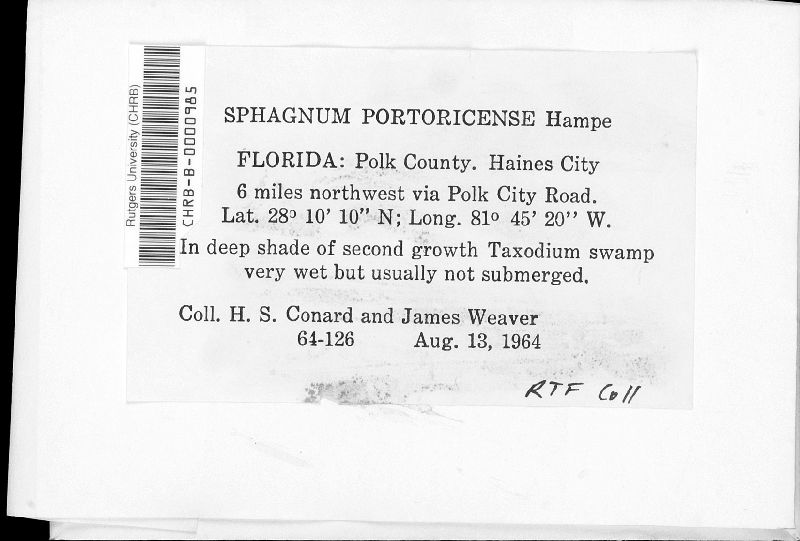
|
Family: Sphagnaceae |
Plants typically with upright stems, young branches arranged spirally around stem at growing apex into a capitulum, branches clustered into fascicles along stem, stem and branch leaves of alternating inflated, S-shaped to rhomboid hyaline cells and narrow linear chlorophyllous cells, hyaline cells typically fibrillose and porose on branch leaves. Protonema typically 1-stratose, gametophyte developing from lateral margin. Stems differentiated into a central cylinder of thin-walled parenchymatous cells, merging into a cylinder of thick-walled cortical cells surrounded by 0-4 layers of thin-walled inflated cells, superficial layer of cells usually aporose, but may be porose. Stem leaves may be less fibrillose or efibrillose and less porose or aporose than the branch leaves, often septate, a distinct border of narrow linear chlorophyllous cells often along margins and at base, and with a greater width:length ratio than branch leaves in anisophyllous forms, partly differentiated in hemiisophyllous forms, and identical in isophyllous forms. Branches typically dimorphic as spreading and pendent branches, but some species lack branches or branches are not clearly differentiated, pendent branches typically more slender than spreading branches and with a tendency to adhere to and cover the stem. Branch fascicles typically with 2 spreading and 1-2 pendent branches, but there may be up to 12(-14) per fascicle. Branch stems typically green, with a superficial layer of inflated retort cells; these grouped or solitary, usually porose at the distal end with a conspicuous or inconspicuous neck. Branch leaves with 2/5 phyllotaxy, of a 1-stratose network of alternating chlorophyllous and hyaline cells; hyaline cells usually S-shaped, rarely rhomboid, nearly always strengthened with conspicuous spiral fibrils, small to large, round to elliptic and sometimes ringed pores occur along commissures or rarely on cell lumen, convex surface typically with more pores per cell than concave surface; chlorophyllous cells may be enclosed on both surfaces, more broadly exposed on one surface or equally exposed on both surfaces as viewed in transverse section, adjacent cell walls typically smooth, but various types of cell wall projections may be clearly visible in transverse section. Sexual condition dioicous or monoicous; stalked globose antheridia borne at the tips of branches usually with swollen colored tips of b The concept of species in Sphagnum is controversial. We have followed P. Isoviita (1966) and K. I. Flatberg (1994) in the recognition of species. H. A. Crum (1984) and others (R. E. Daniels and A. Eddy 1985; A. L. Andrews 1958, 1959) have adopted more conservative taxonomic concepts for species in the Northern Hemisphere. Description of the spores above is from Cao T. and D. H. Vitt (1986); for additional discussion of the protonema see C. B. McQueen (1988). Microscopic features can be observed by using a concentrated aqueous or alcohol solution of Crystal Violet. A 50% solution of alcohol and Methylene Blue or Safranin Red can be used, but these usually do not stain features such as minute pores, fibrils, wall thinnings, and surface sculpture on the chlorophyllous cells. The number and kinds of branches should be determined, individual stem and branch leaves (from the middle of a spreading branch) should be examined from the distal 2 cm of the plant, and the superficial surface of stem cortical cells as well as cross sections of branch leaves and stems may need examination.
|
This project was made possible in part by the Institute of Museum and Library Services [MG-70-19-0057-19].
Powered by Symbiota



